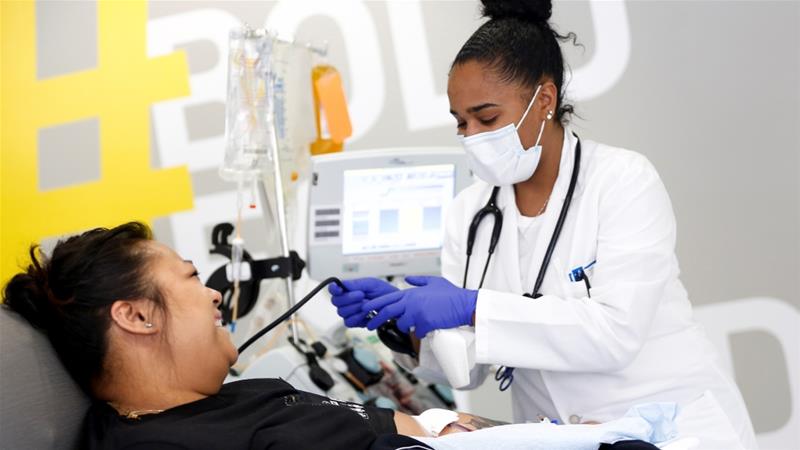As the coronavirus pandemic claims more lives across the globe, the search is on to find an effective vaccine for the disease. But while scientists say that could take up to 18 months, there is an urgent need to find effective medicinal treatments for those in hospital suffering from the more severe symptoms of the illness.
The vast majority of hospital care is focused on supportive treatment; that is – helping the patient stay alive until their own immune system has time to fight off the virus. This may include giving fluids, oxygen or a ventilator, or treating them with antibiotics for opportunistic infections that develop alongside the virus.
While the world’s governments and the World Health Organization (WHO) urgently look at medical treatments that could actively fight the coronavirus infection, some countries are looking at something called convalescent plasma therapy to treat those infected with the virus.
Plasma is the often-forgotten component in blood: It is the liquid part of blood, making up 55 percent of its overall content. When isolated on its own, blood plasma is a light yellow liquid, similar to the colour of straw. Along with water, plasma carries salts and enzymes.
The primary purpose of plasma is to transport nutrients, hormones and proteins to the parts of the body that need it. Cells also deposit their waste products into the plasma and the plasma, in turn, helps remove this waste from the body. Blood plasma also ushers the movement of all the elements of blood through the circulatory system.
Convalescent plasma therapy involves taking blood from a patient who has made a full recovery – or who has “convalesced” – from the coronavirus. The idea is that they will have antibodies to the virus in their blood. Coronavirus antibodies are specific immune proteins that develop when a patient has an infection. They seek out and attack the coronavirus, destroying it before it can infect further parts of the body.
Once the blood is taken from the recovered patient, the plasma component containing these valuable antibodies is separated out and given via a transfusion to other people who are hospitalised and suffering from the more severe symptoms of the coronavirus.
It is thought that people who suffer from the more serious symptoms of coronavirus, including respiratory problems and pneumonia, have been slower to produce their own antibodies to the disease compared with those who develop only minor symptoms. The transfused antibodies will help them fight off their coronavirus infection.
Plasma therapy is not a new idea and has been used effectively in the past to treat other viral infections. It was first used in the late 1800s by German physiologist Emil von Behring for his life-saving work developing a cure for diphtheria, a bacterial infection that was particularly fatal for children. He injected children with antibodies to diphtheria taken from animals that had recovered from the disease, with positive results.
Plasma therapy was used again to treat patients with the Spanish Flu in the 1918 outbreak, and in 1934 Dr J Roswell Gallagher used it to fight a measles outbreak among a group of students in Pennsylvania.
The discovery of antibiotics (which treat bacterial infections) and vaccines put plasma therapy on the back burner for many infectious diseases, but the recent emergence of viruses, such as the new coronavirus, Severe Acute Respiratory Syndrome (SARS) and Middle East Respiratory Syndrome (MERS), that have all spread through communities with no immunity and no effective vaccine, has highlighted its importance again. Now, many countries are using it in small numbers of patients and are fast-tracking trials looking into the effectiveness of its use in the treatment of COVID-19.
A recent study in China looked at the effects of giving convalescent plasma therapy to 10 COVID-19 patients and compared the results with similar patients who were treated with other trial drugs. The results were promising, but this was only a small trial and larger, more robust trials are needed.
However, countries such as the United States, Iran and the United Kingdom are already using convalescent plasma therapy for some of their COVID-19 patients, albeit in small numbers.
While we are waiting for an effective vaccine to prevent the disease from setting in, convalescent plasma therapy is showing promising results in the treatment of the disease itself.
SOURCE: AL JAZEERA NEWS
